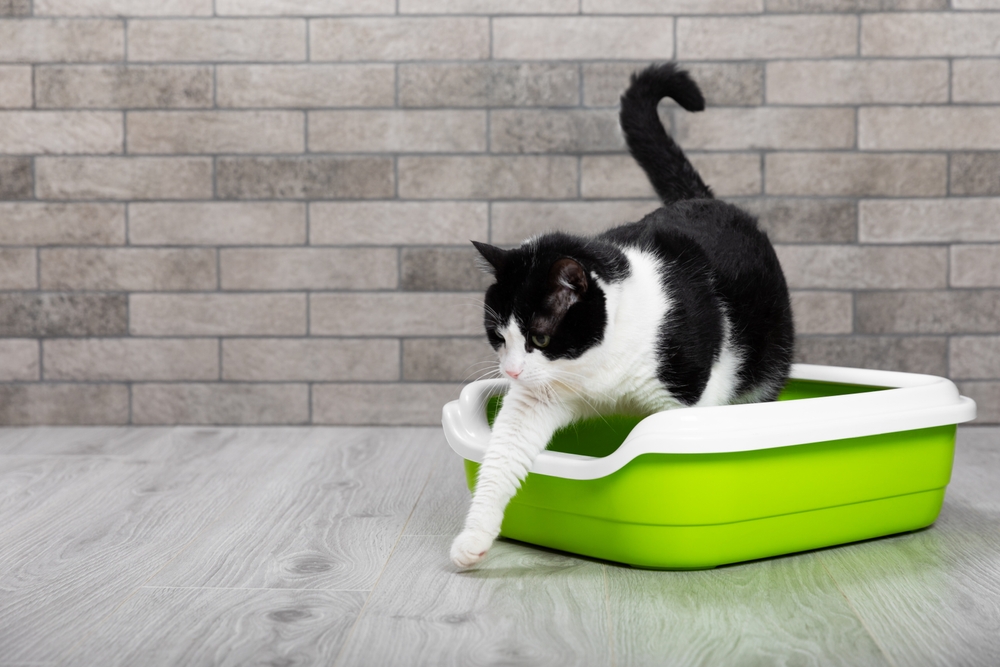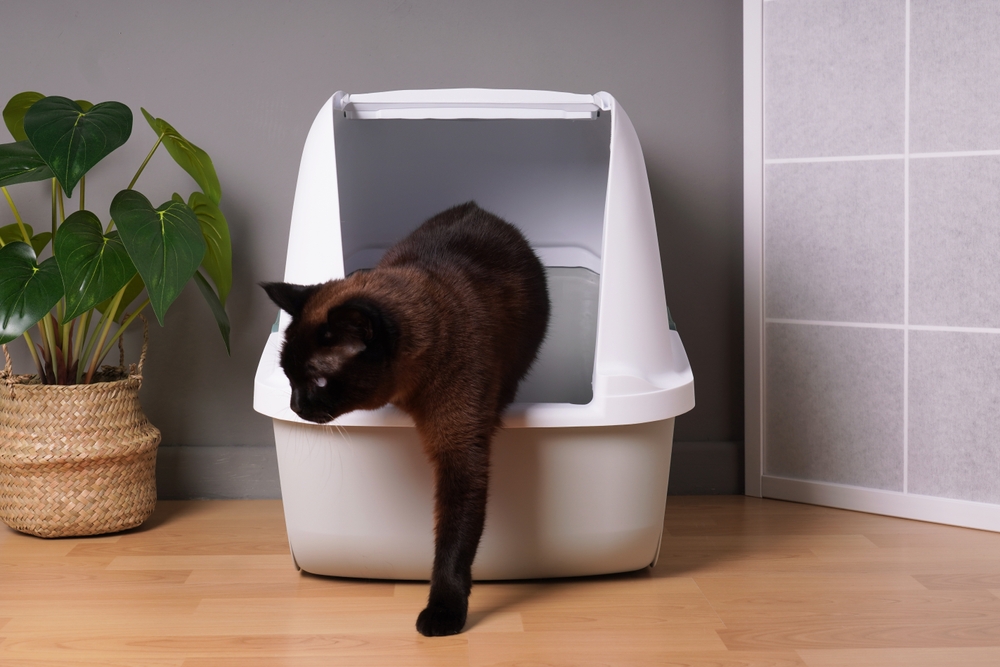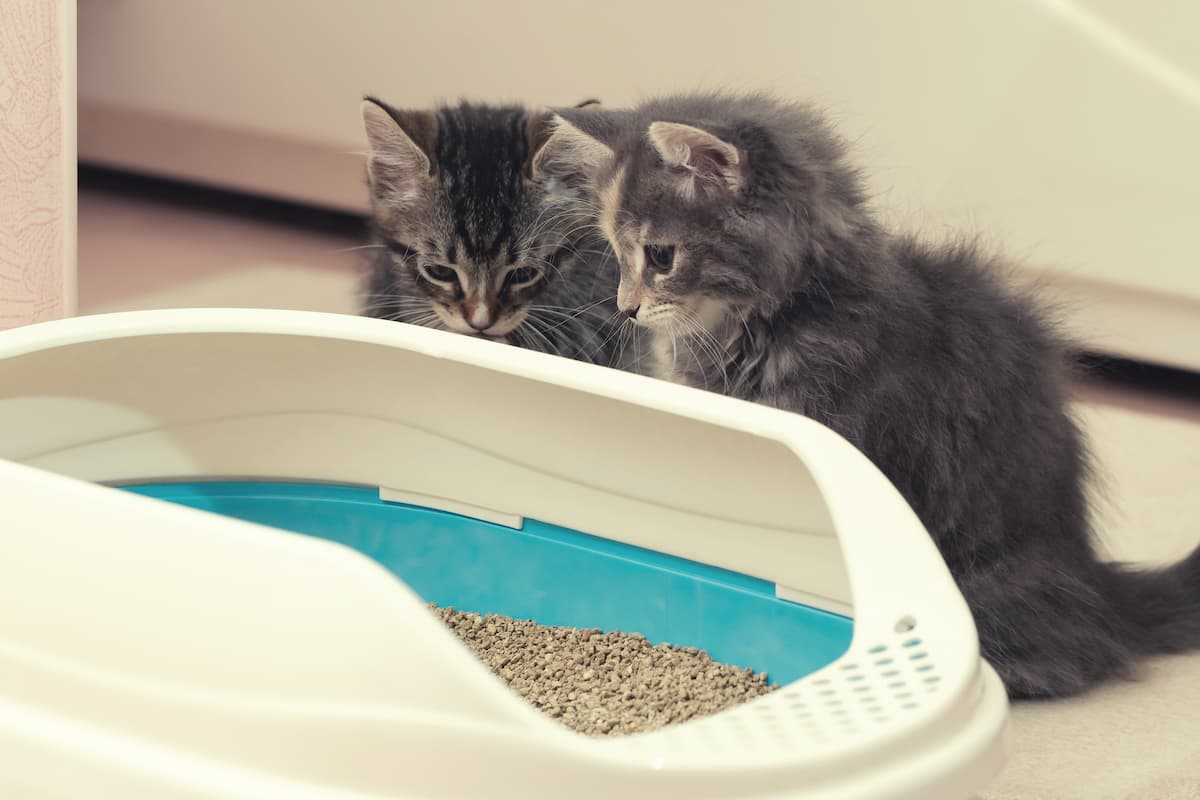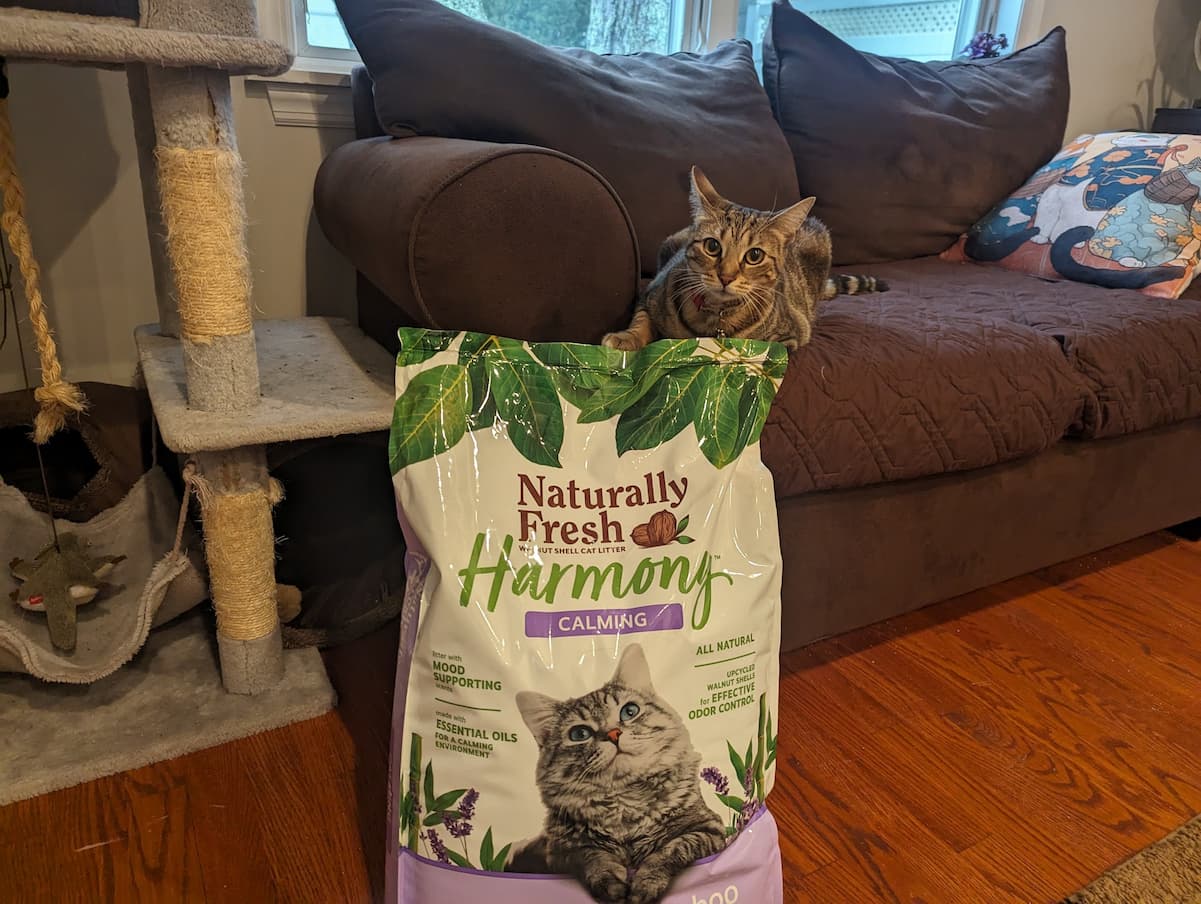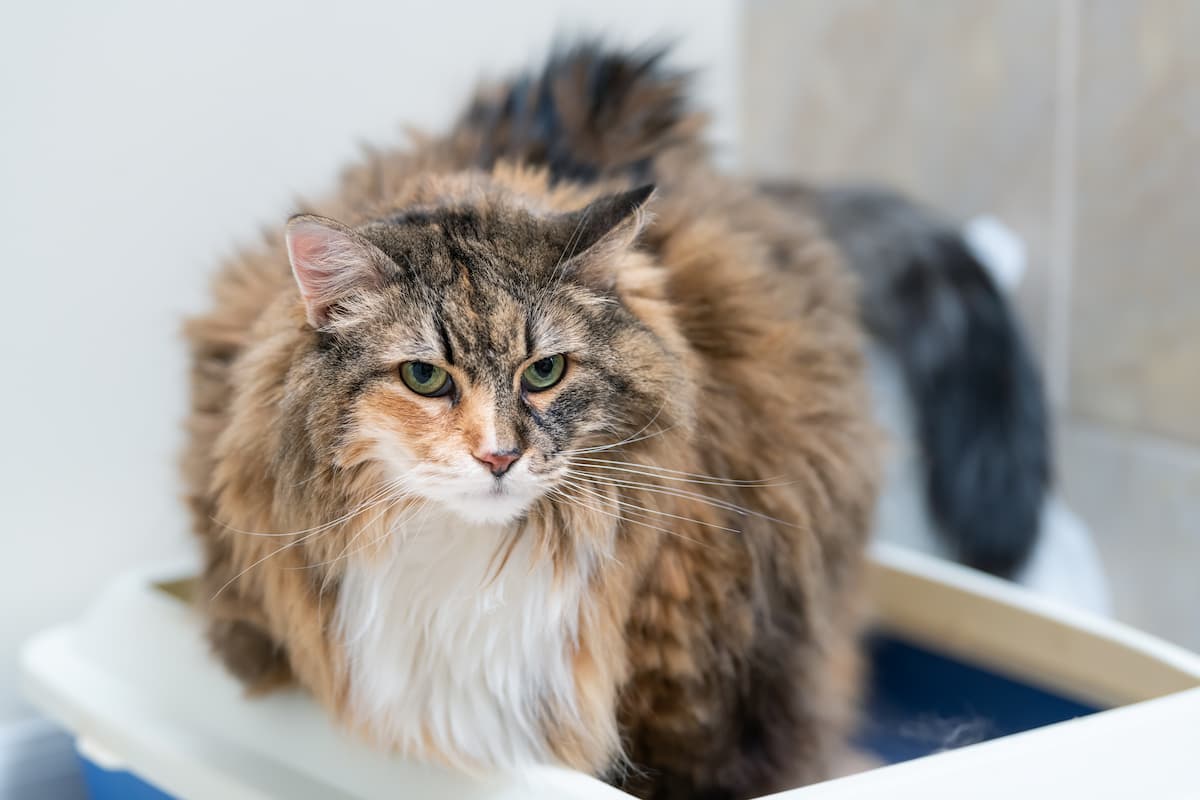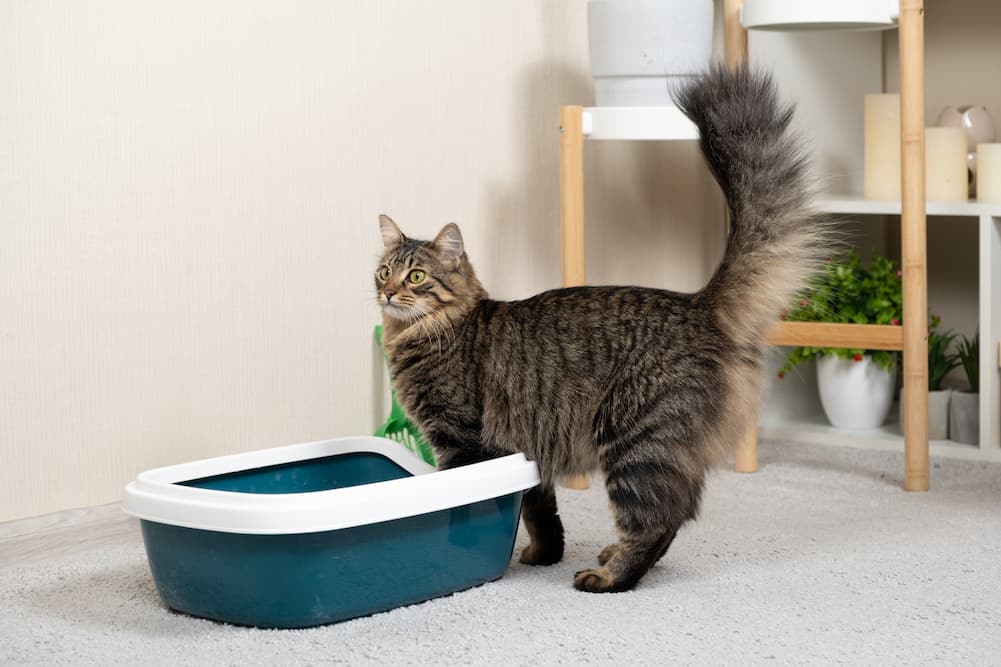8 Things Your Cat’s Litter Box Can Reveal About Their Health
Published on February 26, 2024
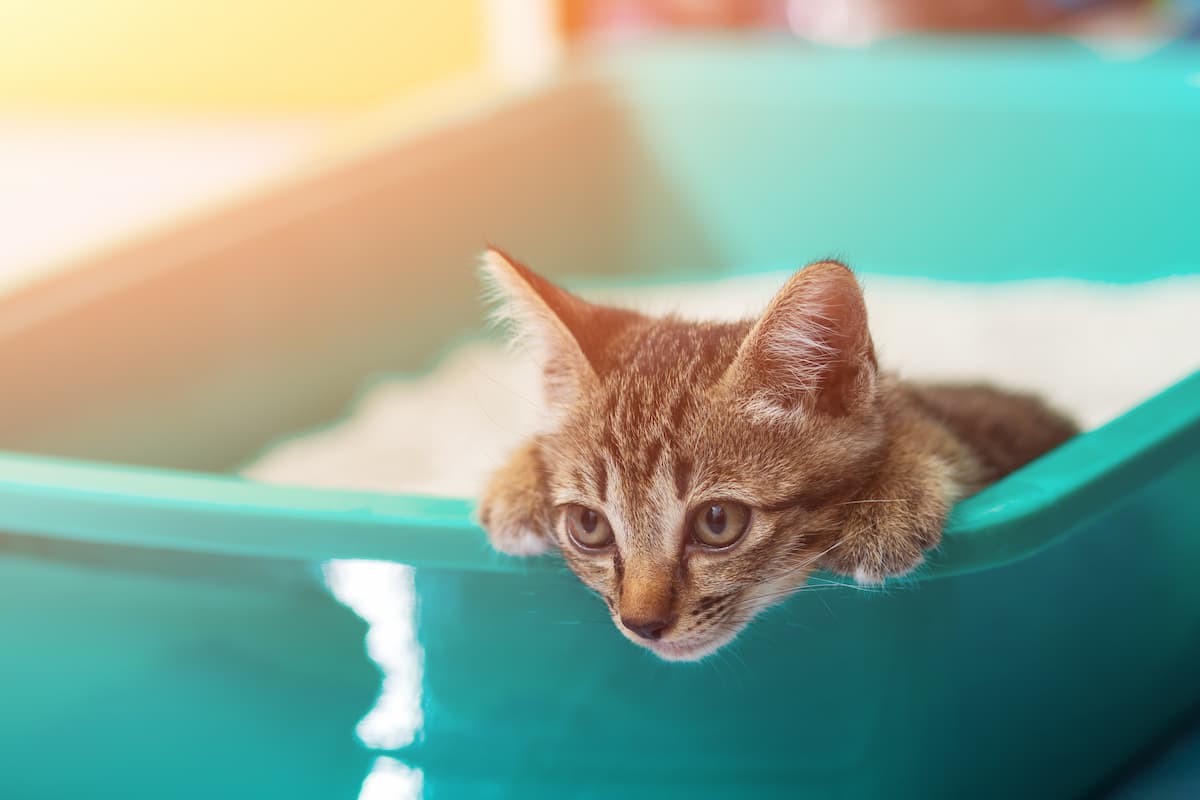
The author received compensation from PetSmart for their services in writing this article. Additionally, Vetstreet may make a small affiliate commission if you click through and make a purchase.
The contents of your cat’s litter box — and even around it — can tell you a lot about their overall health and well-being. Even though cleaning your cat’s litter box isn’t the most fun part of pet ownership, paying attention to your cat’s toileting habits can help identify potential health issues that may need veterinary intervention.
Changes in your cat’s litter box habits or output can point to issues ranging from minor gastrointestinal upset to serious urinary tract infection.
But how can pet parents interpret what their cat’s litter box is telling them? Some innovative cat litters, such as Fresh Step Crystals Health Monitoring Litter, flag potential health concerns with color-changing crystals. But certain changes to your cat’s behavior, habits, or waste can act as a red flag, too. Here’s what every pet parent needs to know about what a cat’s litter box can reveal about their health.
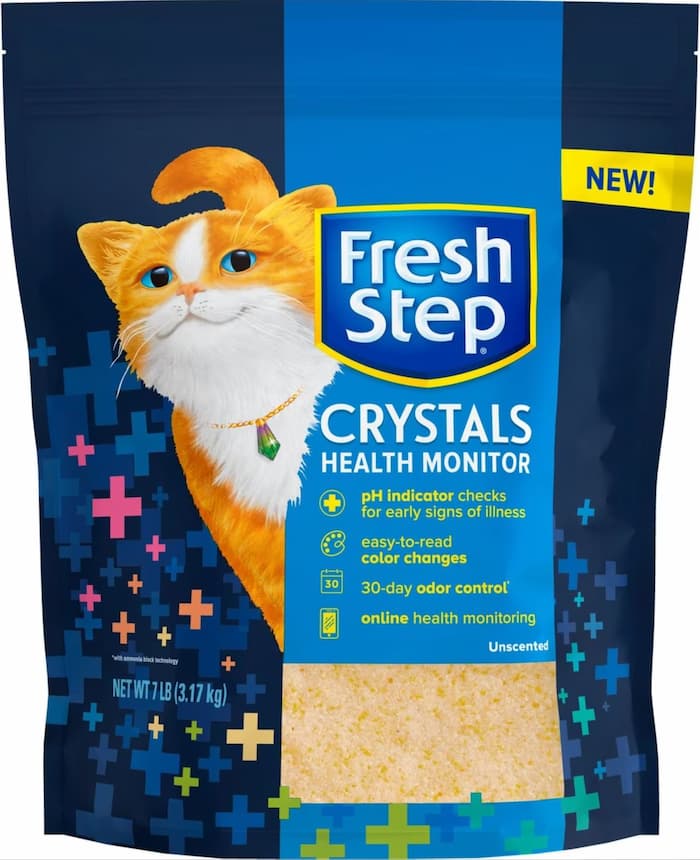
Understanding Your Cat’s Litter Box Habits
“Cats are creatures of habit and usually follow consistent patterns in their litter box usage,” explains Dr. Sabrina Kong, DVM. “A healthy cat typically urinates two to four times daily and defecates once or twice.”
If your cat doesn’t fit this pattern to a tee, that’s not necessarily cause for concern. According to Dr. Kong, patterns can vary based on an individual cat’s diet, water intake, and metabolism. However, knowing your cat’s regular poop and pee schedule plays a key role in helping you detect changes that could indicate a health problem.
“Significant deviations, such as increased frequency, decreased output, straining, or noticeable changes in stool consistency, can be signs of health problems,” explains Kong.
Monitoring these changes — either visually or with a color-changing cat litter like Fresh Step Crystals Health Monitoring Litter — and talking to your veterinarian about any concerns can help you catch and treat issues before they become larger problems.
8 Things Your Cat’s Litter Box Can Reveal About Their Health
From cat health problems like urinary tract infections to aversions to certain types of cat litter, here are potential issues to watch for.
Cat Urinary Tract Infection (UTI)
“Infections in the urinary system can cause discomfort during urination, leading to aversion to the litter box,” says Dr. Colleen Lambo, DVM, a veterinarian with mobile veterinary services provider The Vets. You may notice your cat straining to urinate inside or outside their box. It might also seem like they’re urinating a lot more, but if you check their box, the litter is often still dry.
“Color-changing litters may assist in early identification of urinary issues by detecting changes in pH,” says Dr. Lambo. So, if your cat is prone to UTIs, or you want to detect any changes to their urine as quickly as possible, using a color-changing kitty litter might be a good idea. One such litter is Fresh Step Crystals Health Monitoring Litter.”
Cat urinary tract infection symptoms can quickly become serious, especially in male cats. So, if you notice your cat peeing blood or straining to urinate, consider this a medical emergency and seek veterinary care urgently.
Feline Interstitial Cystitis (FIC)
“This is a condition characterized by bladder inflammation, causing pain and difficulty urinating,” said Dr. Lambo. It’s sometimes called feline lower urinary tract disease (FLUTD).
According to one study, stress can also be a factor in the development of FIC, whether from a recent house move, renovations, or the addition of a new cat.
If you have a multi-cat household, ensure there are enough resources for each cat, plus one spare. So, if you have two cats, make sure there are always three litter trays available in separate areas of the house.
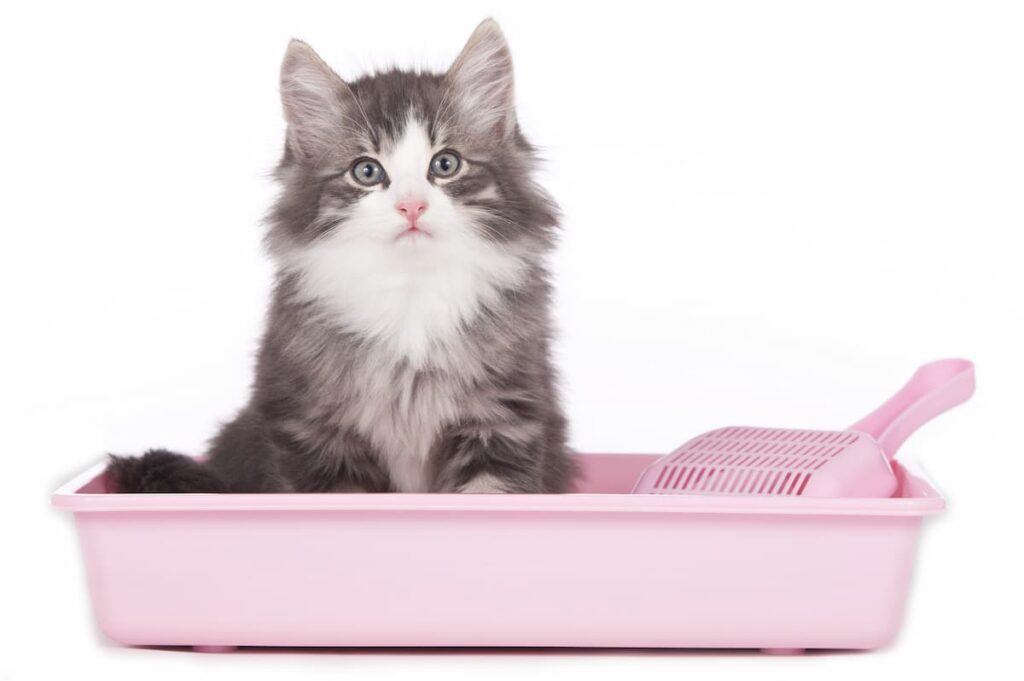
Gastrointestinal Issues
According to Dr. Lambo, “Problems such as constipation, diarrhea, or inflammatory bowel disease can affect a cat’s litter box habits.”
“Watch out for small, hard stools that can indicate dehydration or constipation,” says Dr. Kong. “Loose or watery stools can indicate gastrointestinal upset,” she adds. Take note of any unusual smells explained by a change in your cat’s diet. If your cat is constipated, they may associate this discomfort with their litter box and avoid using it.
If these problems persist for more than 48 hours, or you’re concerned about your cat’s health, it’s best to ask your veterinarian for advice.
Stress and Anxiety
“Cats may avoid the litter box due to stress, changes in the household, or conflicts with other pets,” says Dr. Lambo.
Ensure your cat’s litter box is in a suitable part of your house. Dr. Lambo recommends “ensuring it is in a quiet, easily accessible location, away from the cat’s food and water bowls.”
Again, if you have multiple cats, make sure there are always enough litter boxes for each cat, plus one spare. A dirty litter box can also stress cats out — and they may look for somewhere else to do their business rather than use an unclean box.
Dehydration
If your cat seems to be urinating less than usual or their urine is very dark, this can be a sign of dehydration. It’s hard to monitor a cat’s water intake—but they tend to drink around ¾ to 1 cup daily.
According to the Cornell Feline Health Center, one way to check for dehydration is to gently pull the skin on your cat’s shoulders upwards. If it doesn’t fall back down immediately, they may be dehydrated. Another way to check is to look at your cat’s gums—they should be pink and moist rather than pale and dry.
Litter Type Aversion
Placing your cat’s litter box in the right location is crucial—but so is the type of litter you use. “Some cats prefer certain textures, and experimenting with different types may help find what the cat likes,” notes Dr. Lambo.
If you want to transition your cat to a different kind of litter, like crystal cat litter, do so over a week, adding a small amount of the new litter and then gradually increasing the quantity while decreasing the amount of old cat litter.
Health Issues
Several health issues, including kidney disease and diabetes, can cause changes to your cat’s litter box habits.
“Cats with kidney disease may experience increased thirst and urination, leading to frequent use of the litter box,” says Dr. Bethany Hsia, DVM, co-founder of CodaPet. “Kidney disease can cause changes in urine concentration and odor, which may result in inappropriate elimination.” .
“Diabetes can lead to increased urination and thirst in cats. As a result, diabetic cats may have accidents outside the litter box or require more frequent litter box visits,” she adds.
Mobility Issues
Why did my cat poop on the floor? One reason behind an older cat not using their litter box is a mobility-related issue.
“Arthritis or other mobility issues may make it difficult for cats to access the litter box comfortably,” says Dr. Lambo. This can be more of an issue with some types of litter boxes that are harder to access, for example, self-cleaning boxes with a high step or covered boxes.
In this case, a clue can be a cat pooping outside the litter box or a cat peeing outside the litter box but close to it. This indicates they’re trying to access their box but are having trouble.
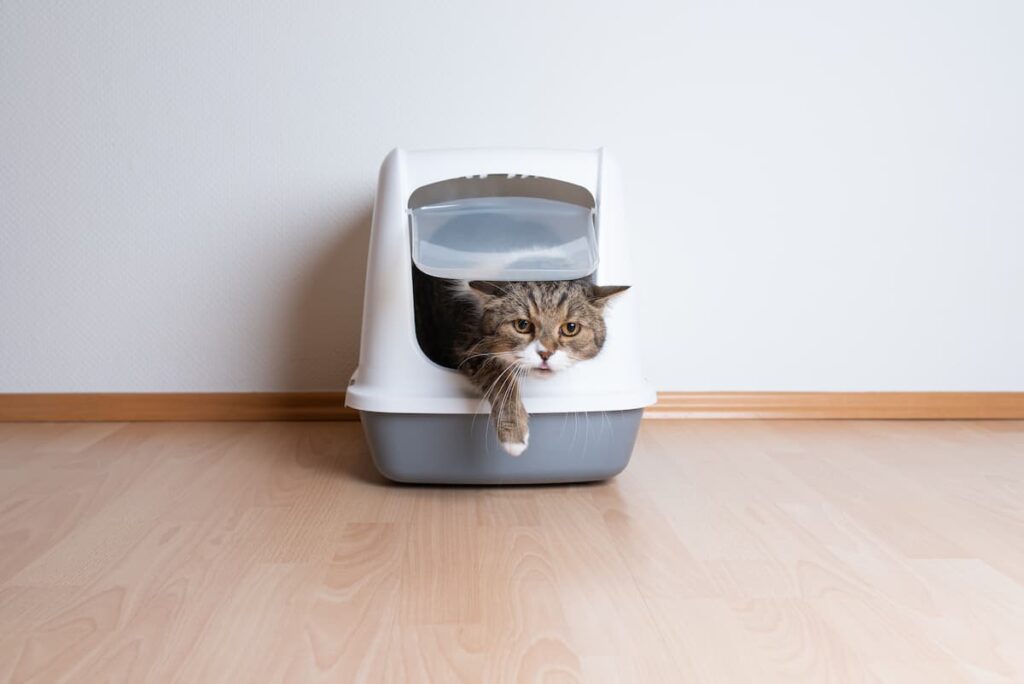
What To Do if You Suspect Cat Health Problems
So, you’ve noticed some changes to your cat’s regular litter box habits. What next?
Dr. Hsia advises monitoring any “changes in urine color, changes in urine frequency, changes or stool consistency or if your cat appears to be straining when urinating or defecating.”
If these changes appear minor, and your cat doesn’t show any other concerning symptoms, you might decide to monitor the situation closely.
“However, it is important to keep a watchful eye on the cat’s behavior and litter box habits while being prepared to seek veterinary advice if the situation does not improve or if additional symptoms develop,” explains Dr. Hsia.
Taking Clues From Your Cat’s Litter Box
Cleaning out our cat’s litter box needs to be done every day, so paying attention to the contents makes sense! Getting to know what’s normal for your cat and then regularly monitoring any changes can give an early indication of any health issues.
Cat owners all know that our cats love to stay clean—the same goes for their litter box. Self-cleaning litter boxes can be a good option while you’re at work, so you know your cat doesn’t have to use a dirty box.
Pay attention to the location of your cat’s litter box and the type of litter you’re using. All this, plus regular veterinary checkups, should keep your cat’s toilet habits in tip-top condition!

